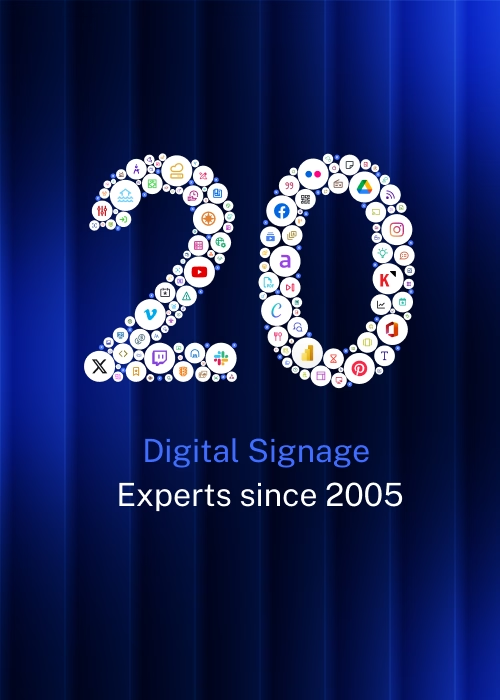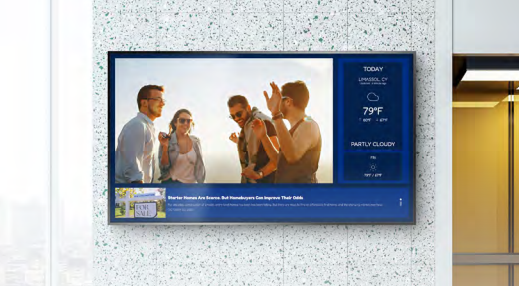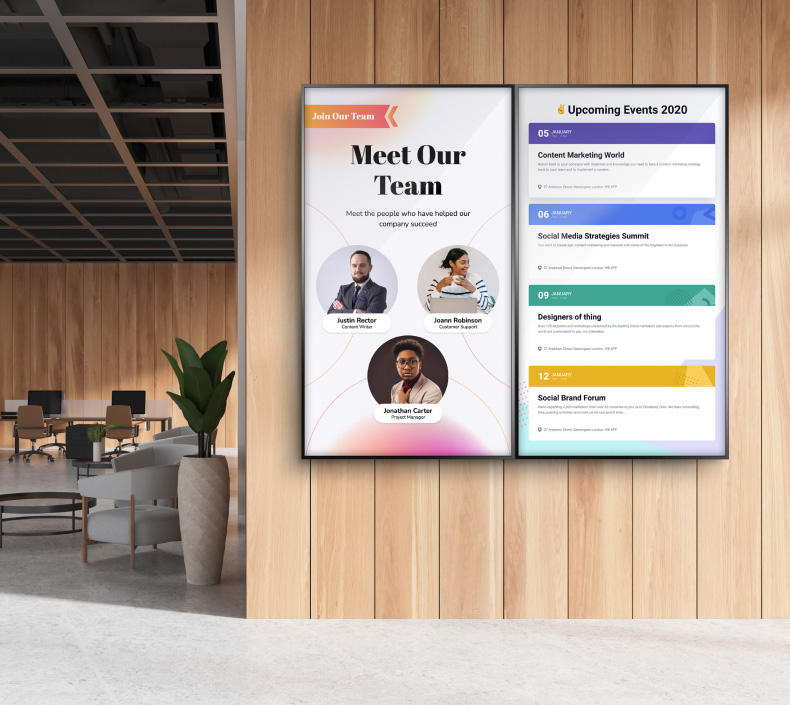Digital vs. Traditional Signage: Which is More Effective?
In the world of advertising and marketing, the debate between the effectiveness of digital signage and traditional signage continues to be a hot topic. Both forms of signage have their unique benefits and drawbacks, making it essential for businesses to carefully evaluate which option best suits their needs.

Overview of Digital Signage
Digital signage refers to the use of digital displays, such as LED screens, LCD monitors, or projection, to present multimedia content. This form of signage is highly versatile, allowing businesses to display dynamic content, such as videos, animations, and real-time updates. Digital signage is commonly used in various settings, including retail stores, corporate environments, public spaces, and transportation hubs.
Features and Modern Applications
- Dynamic Content: Digital signage allows for the display of moving images, videos, and interactive content, making it more engaging.
- Interactivity: Touchscreens and other interactive elements can be incorporated to enhance user engagement.
- Real-Time Updates: Content can be updated instantly, ensuring that information remains current and relevant.
Digital signage is particularly effective in environments where engaging and updating audiences quickly is crucial.
Overview of Traditional Signage
Traditional signage encompasses static signs made from materials like paper, cardboard, wood, or metal. These signs have been used for centuries and include billboards, posters, banners, and shop signs. Despite the rise of digital technology, traditional signage remains prevalent due to its simplicity and reliability.
Common Types and Historical Context
- Billboards: Large outdoor displays used to advertise products or services to passing traffic.
- Posters: Printed graphics used for promotional purposes, often found in public places.
- Banners: Large printed signs used at events or in storefronts to draw attention.
Traditional signage has a long history of effectively communicating messages and promoting businesses in a straightforward manner.
Effectiveness of Digital Signage
Digital signage offers several advantages that make it a powerful tool for modern marketing strategies.
Advantages
- Dynamic and Engaging Content: The ability to display moving images and videos captures attention more effectively than static signs. According to recent studies, digital signage captures 400% more views than static signs .
- Interactivity: Interactive features such as touchscreens and QR codes enhance user engagement and provide a personalized experience.
- Real-Time Updates: Businesses can quickly update content to reflect current promotions, news, or events, ensuring the information displayed is always relevant.
- Versatility: Digital signage can be used in various locations and adjusted to different formats and sizes.
These advantages make digital signage an attractive option for businesses looking to engage their audience in innovative ways.
Effectiveness of Traditional Signage
Despite the rise of digital alternatives, traditional signage continues to offer significant benefits.
Benefits
- Simplicity: Traditional signs are straightforward and easy to understand, making them effective for quick communication.
- Reliability: Without the need for electricity or internet connections, traditional signs are less prone to technical issues.
- Lower Initial Costs: The production and installation of traditional signs often require a smaller initial investment compared to digital signage.
Traditional signage remains a reliable and cost-effective option for businesses with simpler communication needs.
Comparing Audience Engagement
The level of audience engagement achieved by digital and traditional signage can vary significantly.
Digital Signage Engagement
Digital signage is designed to be eye-catching and interactive, which can significantly enhance audience engagement. Features like motion graphics and real-time updates keep content fresh and engaging. Additionally, interactive elements can encourage viewers to interact with the signage, leading to a more memorable experience. "68% of customers reported that digital signage would make them more likely to buy advertised products, and digital signage captures 400% more views than static displays."
Traditional Signage Engagement
Traditional signage relies on bold designs and strategic placement to capture attention. While it may not be as dynamic as digital signage, traditional signs can still effectively engage audiences through clear messaging and visually appealing designs. However, the lack of interactivity means traditional signage may not hold attention as long as digital alternatives.
Cost Comparison
When considering digital signage vs traditional signage, cost is a crucial factor. Both forms of signage have different cost implications that businesses must consider.
Digital Signage Costs
- Initial Investment: The cost of digital displays, software, and installation can be higher, but bring more return on investment in the long run.
- Maintenance: Regular updates and potential repairs can add to ongoing expenses.
- Energy Consumption: Digital signage requires a continuous power supply, leading to higher energy costs.
Traditional Signage Costs
- Production and Installation: The costs for producing and installing traditional signs are generally lower.
- Maintenance: Traditional signs typically require minimal maintenance.
- Longevity: While traditional signs may need to be replaced or updated periodically, their overall cost over time can be lower.
Both digital and traditional signage have distinct cost structures, and businesses need to evaluate their budget and long-term goals when making a decision.
Flexibility and Adaptability
The flexibility and adaptability of signage are important factors that can influence its effectiveness in different scenarios.
Digital signage excels in its ability to adapt to different environments and requirements. Content can be easily changed or updated to reflect new campaigns or information. This adaptability makes digital signage ideal for businesses that need to frequently update their messages.
Traditional signage, while less adaptable than digital, can still be effective in stable environments where messaging does not need frequent changes. Its durability and simplicity make it a dependable choice for many businesses.
Technological advancements continue to shape the effectiveness of both digital and traditional signage.
Impact on Digital Signage
Advancements in display technology, such as higher resolution screens and interactive features, have enhanced the effectiveness of digital signage. Innovations like augmented reality (AR) and artificial intelligence (AI) are also being integrated to create more immersive experiences.
Impact on Traditional Signage
While traditional signage does not benefit directly from digital technology, advancements in printing technology have improved the quality and durability of traditional signs. New materials and printing techniques allow for more vibrant and long-lasting designs.
Evaluating Effectiveness in Various Contexts
Both digital and traditional signage have their unique strengths and can be highly effective depending on the context.
Digital signage is particularly effective in dynamic environments where content needs to be frequently updated or tailored to different audiences. It is ideal for retail settings, corporate communications, and public spaces where engagement and interactivity are crucial.
Traditional signage excels in environments where simplicity and reliability are paramount. It is effective for outdoor advertising, events, and locations where digital infrastructure may not be feasible.
Making the Right Choice
Choosing between digital signage and traditional signage ultimately depends on your specific needs and objectives. Businesses must consider factors such as budget, audience engagement, content flexibility, and technological advancements when making a decision.
For more insights on digital signage effectiveness and how it compares to traditional methods, explore our blog. If you're ready to see the benefits of digital signage in action, Schedule a Demo today.







